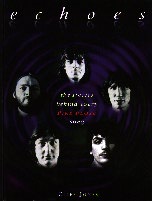

|

| Publication: | Echoes: The Stories Behind Every Pink Floyd Song |
| Author: | Cliff Jones |
| Published: | 1996, Carlton Books (UK/Canadian version) |
| Language: | English |
| Number of Errors/Comments: | ... |
| Errors |
|---|
| Pages: [9a] [9b] [9c] [16-21] [16] [17] [18a] [18b] [24a] [24b] [25] [29a] [29b] [33] [35a] [35b] [36] [37a] [37b] [43] [44] [45] [51] [52] [53a] [53b] [54] [73] [77] [78] [87-91] [93] [97] [98] [99] [102] [104b] [104a] [162] [164] |
|
|
|
|
|
See also page 162 of this book.
|
|
"Free Games for May" Source: Schaffner page 62.
|
|
|
|
|
|
|
|
Source: Schaffner pp. 68-69.
|
|
Source: The Beatles, Anthology 3
|
|
|
|
|
|
|
|
|
|
|
|
|
|
|
|
|
|
|
|
|
|
|
|
|
|
|
|
|
|
|
|
|
|
|
|
|
|
|
|
|
|
|
|
|
|
|
|
|
|
|
|
|
|
|
|
|
|
|
|
See also page 16 of this book.
|
|
|
|
HTML version - Alex Dekhtyar
If you want to submit additions or corrections to the list of errors, send a message to webmaster.
| [Project Errorfest] | [Errorfest Index] | [back to Pink Floyd page] | [Mail Webmaster] |

|